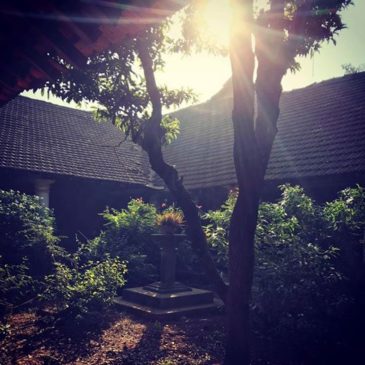The words “Raaj aangan” brings in a feeling of nostalgia and the long gone moments spent in these courtyards or raaj aangan’s. An integral part of many Goan Hindu and Portuguese houses, the courtyards are centrally located and its history can be traced back to the Harappan Civilization. A quadrilateral building plan sees an open centre and thus allowing nature into the house. Courtyards were also incorporated into the architecture for environment, culture and social reasons.
Centrally located, it provides ventilation to innermost rooms even on the ground floor. As a vertical shaft connecting to the open sky, it pours in cheerful light into inner rooms. All the spaces of the house remain well-lighted with natural light, not depending upon on artificial lights during daytime. Courtyard allows for light without bringing in the glare or the haze. Sun beams are received on the side walls of the court shaft and reflected; diffused light illuminates the space cutting out the glare. The idea of having a courtyard was also to afford additional ventilation into the house where windows were small or non existent.
Court is an integral system of built, of light, air, sun and vegetation. Apart from its physical usage and environmental benefits, it can also be directly linked to Vastu Mandal which is a symbolic interpretation of cosmos. The open central square is the ‘zone of God’ (that is why it is kept open) and the area surrounding it is the ‘zone of man’, thus symbolically unifying man with universe.
The courtyard of the house is also a place where the traditional Tulsi Vridhavan is placed, as seen in most Goan Hindu houses. The Tulsi or the Holy basil is a sacred plant in the Hindu belief. The Hindus regard it as an earthly manifestation of the goddess Tulsi who is regarded as a great worshipper of the God Vishnu. The offering of its leaves is a mandatory ritual of worship of Vishnu and his forms like Kishna and Vithoba. The traditional festival “Vadhli Diwali’ or Tulsi wedding is also held in the Raaj aangan. Joint and large families were characteristics of the social family structures in Goa. The ‘Raaj aangan’ would provide as platform for social interaction where family members could come together. The open space provided was used by women of the house as an area to meet up and chat while performing their domestic chores of drying food grains, pickles and salt fish.



